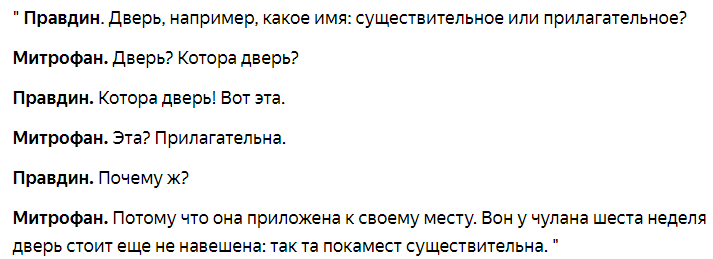I still believe that "when is a door not a door†" is still the best joke in the English language.
†when it's a jar
†when it's a jar
Russian also has a great door joke (dating back to the 1761 play The Minor). The titular character suggests the door to his room is an adjective because it is "adjunct to its place" whereas a different door in the cellar is a noun because it stands on its own. 

In a weird case of the Mandela Effect, I remember the joke backwards: Mitrofan calls the unattached door an adjective because it leans against the wall, while the installed door does not and therefore must be a noun.
Fun‡ fact: the reason that English lets nouns be used as adjectives (for example: "country mouse" or "fallout shelter") is because it originally classified all adjectives as a kind of noun.
‡ opinions vary on whether this fact is fun
‡ opinions vary on whether this fact is fun
• • •
Missing some Tweet in this thread? You can try to
force a refresh





